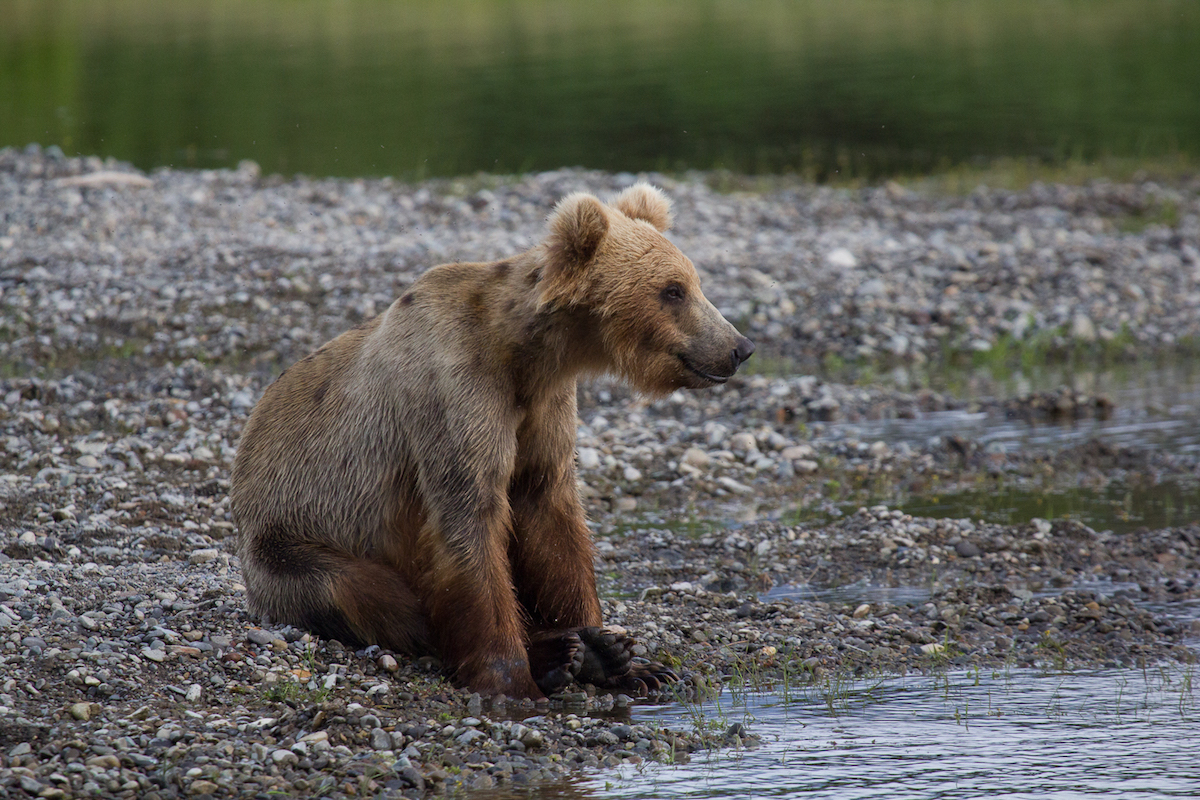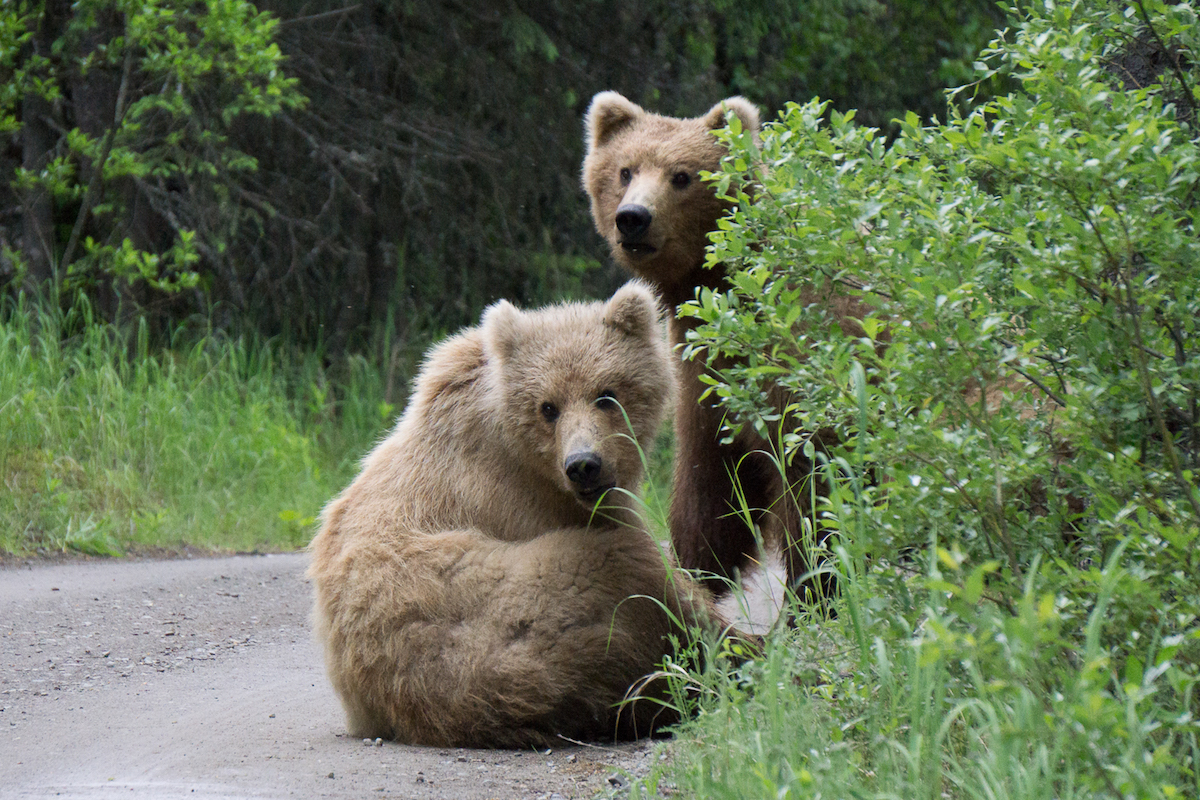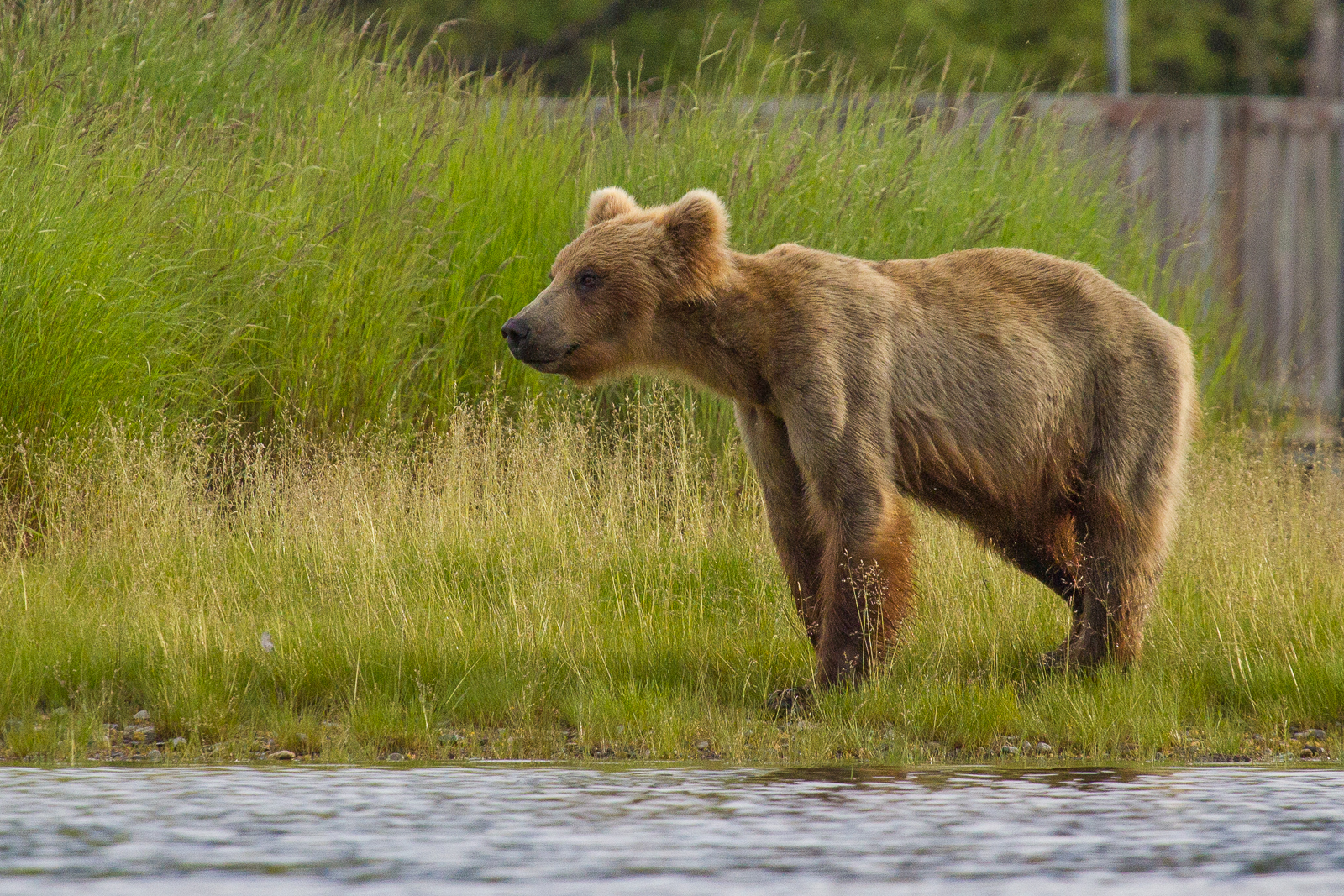
Subadult bear 719 waits for salmon on the banks of Brooks River. NPS Photo/A. Ramos.
Subadult bears face the most challenging and dangerous years of their lives. They’ll need to find a balance between learning to feed themselves for the first time, and avoiding the threatening adult bears that occupy the best available food sources. This summer, we may see more subadult bear action than usual.
In 2016, six different sows had 1.5 year old cubs that appeared to survive until denning time. One additional sow, #132, raised a litter of three 2.5 year olds. Brown bears raise cubs to their second (or less often, to their third) year before emancipating them that spring. In total, there are 9 cubs that are eligible for emancipation this year. If emancipated, they could join eight other subadult bears already known to use the Brooks River.
Subadult brown bears are defined as bears that are independent from their mother, but not yet sexually mature – less than 4 to 6 years old. It’s a blurry line, as bears may mate even before they are sexually mature, and can vary considerably in size. Still, subadults are behaviorally unique from adults and cubs. Their size dictates a cautious, even downright panicked reaction to the presence of other bears. They play with other subadults and young adult bears more frequently than fully developed bears, and in general, they’re more curious and exploratory of their surroundings. After all, they’re still youngsters.
 Subadult bear 719 stands upright to look for salmon in the Brooks River. NPS Photo/D. Kopshever.
Subadult bear 719 stands upright to look for salmon in the Brooks River. NPS Photo/D. Kopshever.
2017 could be a summer with many subadults making appearances on the bearcam. Already, #402 emancipated her cubs, and #273 returned to camp without her cub, indicating that he may have been emancipated as well. More emancipations likely have, and will happen. #504, #94, #132, and #708 “Amelia” all have litters that are of age to depart from the care of their mothers.
The uncertainty of emancipation lies in whether the sow goes into estrous. When a female is biologically ready to mate, her body will produce hormones that male bears can smell. When a male bear begin to pursue her, she must drive her cubs away for their safety. This may be initiated by the sow ahead of time, or could occur as a direct result of a male bear’s approach. The female bear doesn’t choose when to go into estrous and emancipate her cubs, any more than a teenager chooses when to hit puberty.
Subadults who have recently been emancipated, like #402’s and presumably #273’s offspring, have a few ways of coping with the new dangers they face. So far, #402’s youngsters have decided to use the buddy system. New subadults have been known to take this approach – an adult bear is less likely to attack two small bears than one. They will remain together for as long as their tolerance lasts. This might be a few days or even several seasons. At the end of the day, these two siblings will be competing for the same resources, so they won’t stay together forever.
 Sometimes, the survival strategy for subadults is the buddy system. #402's offspring have taken this approach so far in 2017.
Sometimes, the survival strategy for subadults is the buddy system. #402's offspring have taken this approach so far in 2017.
Other newly emancipated subadults take a different approach: they leave. Subadults, especially males, are known to roam from their mother’s home range to establish their own. This could be a particularly attractive option for some of the new subadults we’ve come to know and love through the bearcam. Because the Brooks River is such an ideal fishing location, it’s home to a lot of large male bears – the biggest threat to a young bear. If we don’t see our favorite young bears this summer, don’t despair. They could be healthy and safe at a less busy salmon stream elsewhere in the park.
Other new subadult bears will stick around the Brooks River. Cautious of larger, more dominant bears, they’ll opportunistically scavenging what others leave behind and fish wherever they can fit in. Salmon are plentiful here, and the food rewards will outweigh the risk for some subadults.
Whatever path these newly independent bears take, they’ll encounter more danger and challenge than ever before. Their unique approaches to these challenges will shape their adult lives, and help build their individual skill-sets for surviving in Katmai’s rugged landscape.
Below: 719 looks for salmon at the lower Brooks River. NPS Photo/A. Ramos.

